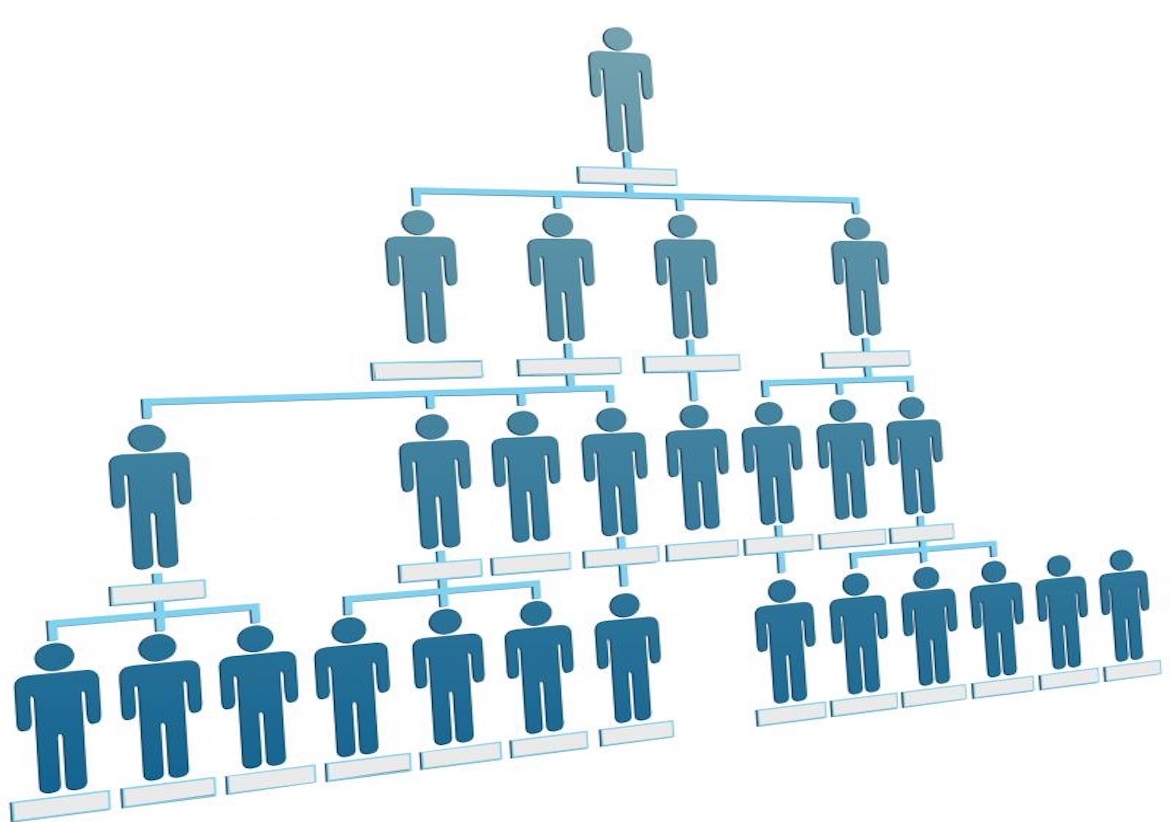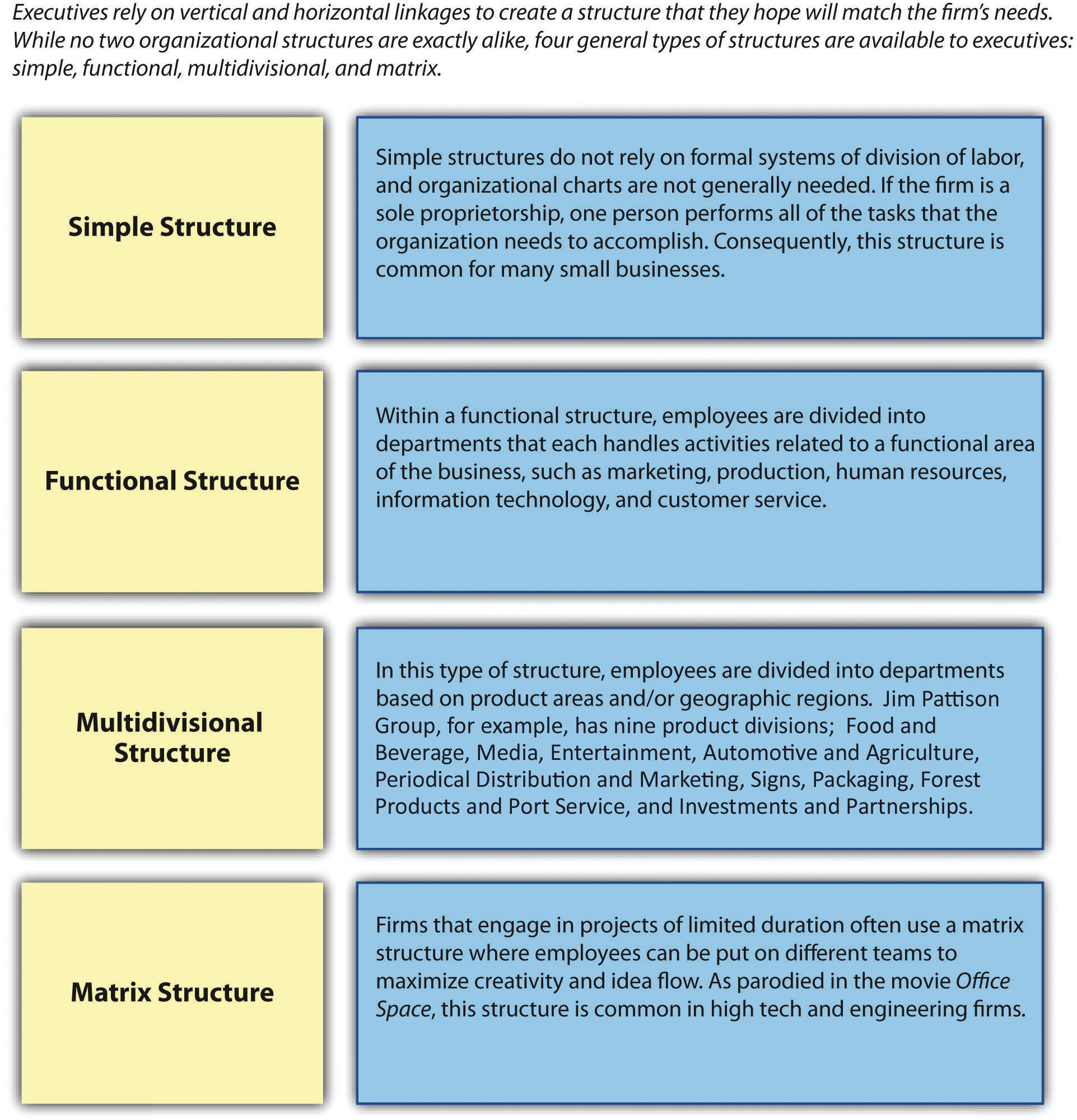Explain the Functions of Different Organisational Structures Centralised
The term organizational structure originates from organizational theory and refers to the hierarchical framework that defines the internal division of labor within the company but the term is also used in the context of other organizations like authorities and NGOs. Whilst tasks such as recruitment may be decentralised as units away from head office may have staffing needs specific to them.

What Is An Organizational Structures Management Square
Example of a hierarchical structure Centralised Organisations Centralised organisations have a head office or a small group of senior managers where the major decisions are made.

. A network organizational structure makes sense of the spread of resources. Its often a chain of command in business and how hierarchies and each department are structured that make it productive or not. In organizational structure terms Matrix is the version in which staff from different function work together on projects in a matrix pattern.
Here are 10 types of organizational structures commonly used by businesses with pros and cons for each. An organizational plan serves to structure a company according to its individual goals eg. Mechanistic and vertical functional organizations let employees dedicate time and talents to mastering their roles.
Organisations may decide that a combination of centralisation and decentralisation is more effective for them. The functions of different organizational structures are to govern a companys efficiencies and productivity. Employees may be grouped together by their role or function.
The organizational structure also determines how information flows between levels within the company. Understand the Organisational Environment To achieve this section you will show an understanding of. Each different functions eg HR finance marketing is managed from the top down via functional heads the CFO the CIO various VPs etc.
Different organisational structures An organisational structure is how a business organises its staff to represent the different layers of management. It is often used in retail chains. Different types of business will adopt different structures.
Potential Drawbacks of Decentralized Organizations. The executives and specialists who make critical decisions are based in the head office. Identify internal and external influences on organisations Understand different models of analysis Understand change in the business environment 2 Understanding Organisational Structure The UK economy is divided into three different sectors- Private.
Most business organisations function by having some form of hierarchy in their structure. The functions of different organisational structures are varied and there a few types these as followed Flat Hierarchical Tall Hierarchical Functional and Matrix. Pros Visualizes the complex web of onsite and offsite relationships in companies Allows companies to be more flexible and agile.
The private sector is funded by private investors these invest capital into a business in hope of returning a greater capital in the future they are generally profit drive. The managers are tasked with offering guidance training and supervision to the lower-level workers. For example functions such as accounting and purchasing may be centralised to save costs.
In a hierarchical organizational structure employees are grouped and assigned a supervisor. A public sector is an organisation generally funded by the public and state. Explain the functions of different organisational structures Bureaucratic structures stick to a strict hierarchy system when it comes to their management.
This process of letting go may be difficult for some entrepreneurs. Pre-bureaucratic structures lack in standards and are found more within small scale start p companies. Centralized structure refers to an organizational framework wherein all the rules and regulations are made by one single body who is usually at the top of the functioning chain and the rest of the people are dependent on that person in the business.
This type of organizational structure is preferred by small retailing businesses who tend to control and employ all their. In some organisations certain functions such as accounting and purchasing may be centralised to reduce costs and increase economies of scale. It can also describe an internal structure that focuses more on open communication and relationships rather than hierarchy.
So a finance manager can cooperate with a sales person to secure a new contract or to rescue the costs of serving a client. Can create silos both for data and communications decreasing efficiency and creating barriers to task completion. Simplifies financial analysis reporting and overall data management.
For example in a centralized structure decisions flow from the top down while in a. In a centralized organization the decision-making powers are retained in the head office and all other offices receive commands from the main office. This structure is usually centralised and there is only one key decision maker.
It is the most common type of organizational structure. Advantages of a Functional Structure Functional departments arguably permit greater operational efficiency because employees with shared skills and knowledge are grouped together by functions performed. Functional product customer and geographic.
Decentralization may promote unhealthy competition among. This is often in the form of a layer or several layers of management at the top and a number of lower-grade workers at the bottom. Based on an organizations application of the common elementscommon purpose coordinated effort division of labor hierarchy of authority as well as centralizationdecentralization and formalizationthe resulting structure will typically exhibit one of four broad departmental structures.
Because centralized organizations assign decision-making responsibility to higher-level managers they place greater demands on the judgment capabilities of CEOs and other high-level managers. Many companies find that the centralization of operations leads to inefficiencies in decision making. Owners or executivesmanagers will have less control and thus need to rely more on employees beneath them to carry out the companys mission and goals.
A centralised structure is where business decisions are made at the top of the business or in a head office and distributed down the chain of command. For instances Small business will have low key hierarchical structure because small business will have few members of staff members therefore the. Every organisation has a different organisational structure.

Understanding Organizational Structures

Creating An Organizational Structure Mastering Strategic Management 1st Canadian Edition

Functional Organisational Structure A Z Of Business Terminology Youtube

What Is An Organizational Structure And Why It Matters Fourweekmba
No comments for "Explain the Functions of Different Organisational Structures Centralised"
Post a Comment